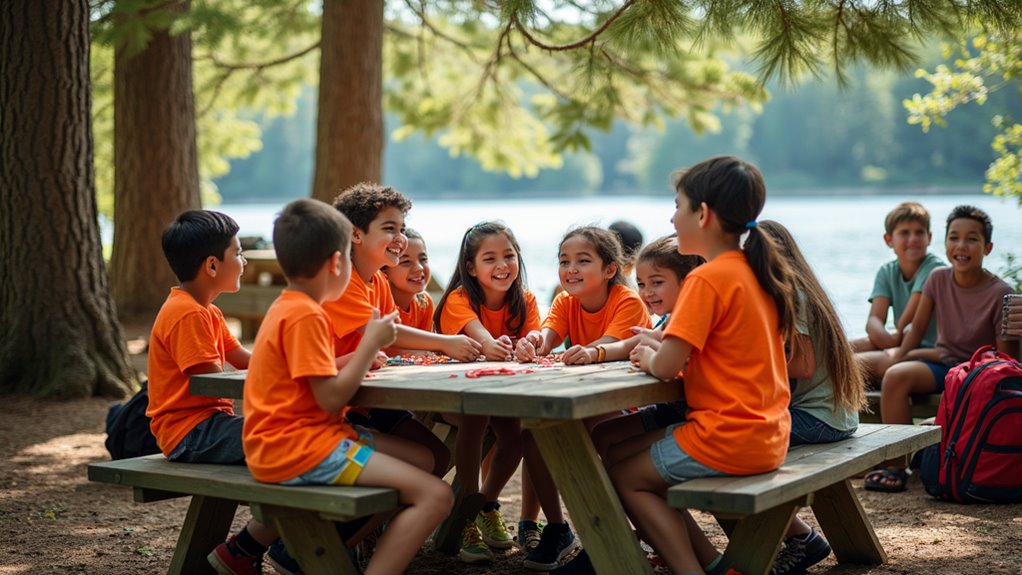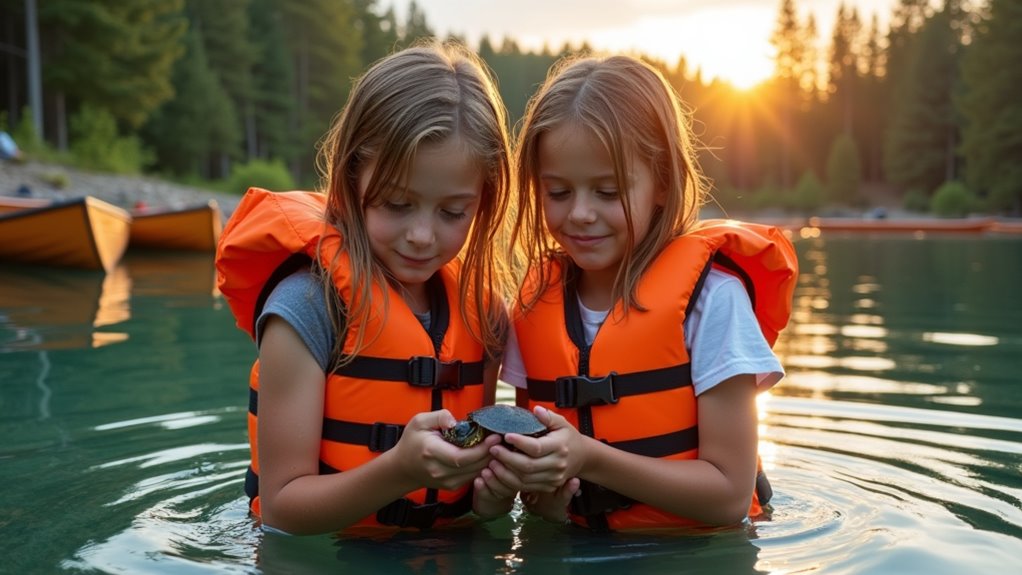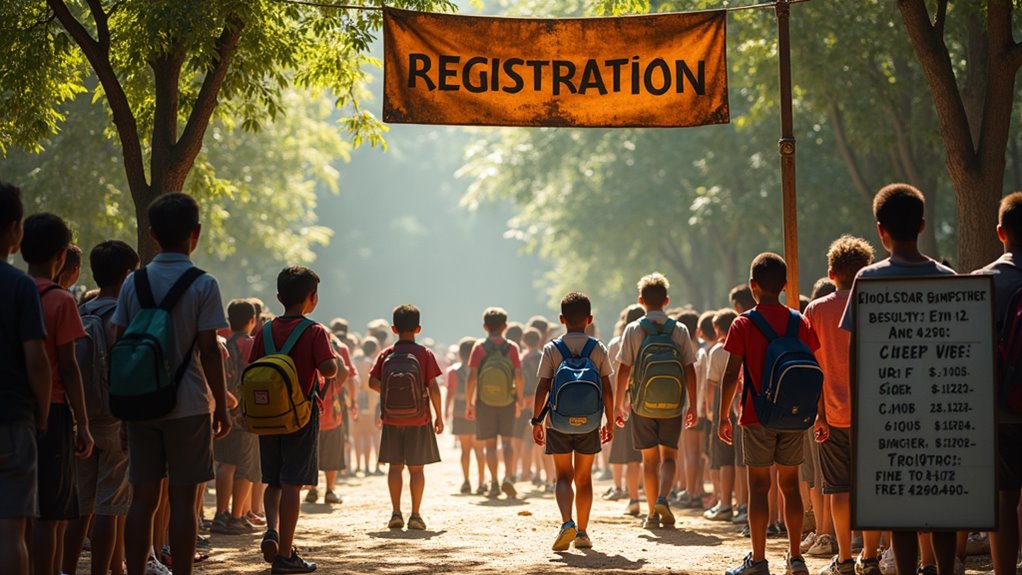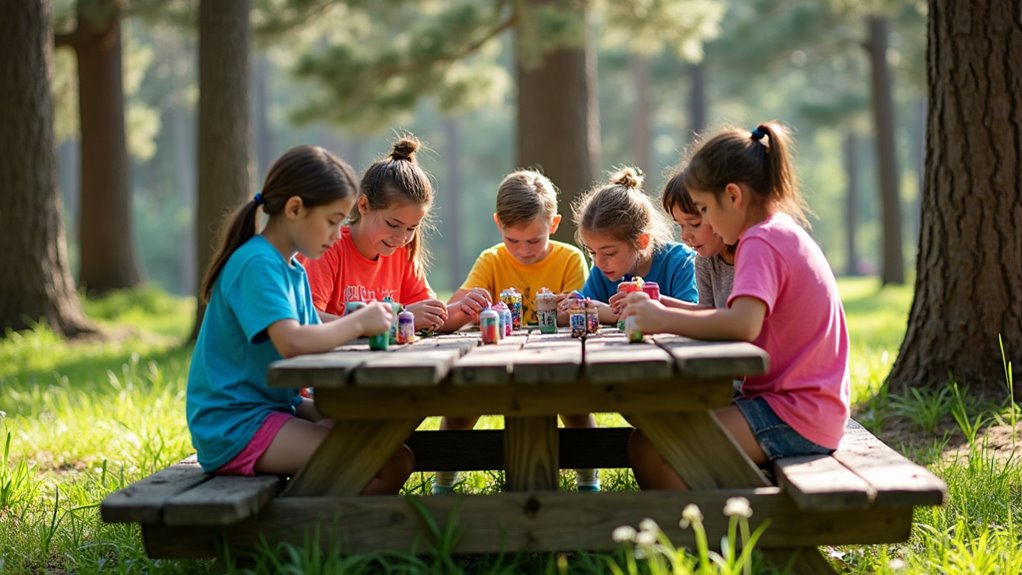Physical Address
304 North Cardinal St.
Dorchester Center, MA 02124
Physical Address
304 North Cardinal St.
Dorchester Center, MA 02124

New adventures await as summer camps evolve beyond marshmallows and crafts, transforming how children learn and grow during their break.
When your little ones aren’t thriving in their usual routine, summer camps can offer the perfect change of scenery. You’ll discover these transformative programs have evolved far beyond traditional campfire songs and friendship bracelets. Today’s camps blend STEM innovation, outdoor adventure, and cultural awareness into experiences that shape young minds. While only a select portion of U.S. families currently participate in summer camp programs, you’ll need to understand why these experiences are becoming increasingly essential for child development in our modern world.

While summer camps remain a cherished American tradition, they’re currently accessible to only 12% of U.S. children, with participation heavily influenced by socioeconomic factors.
Despite their iconic status in American culture, summer camps reach just a fraction of children, largely determined by family wealth and resources.
You’ll find that families with above-median incomes make up 80% of camp participants, and parents with college degrees are six times more likely to send their children to camp.
The ethnic makeup of camps roughly mirrors U.S. demographics, with 60% white, 15% Hispanic, 11% AAPI, and 10% Black attendees. The lack of diversity is particularly evident in camp leadership, where 89.4% are white.
Mothers lead camp enrollment decisions at 57%, compared to 43% of fathers.
When you look at attendance patterns, you’ll notice that day camps attract 26% of children aged 4-14, while overnight camps see just 9% participation.
Many younger children stay home with parents (44%) or extended family (16%) instead of attending formal programs.
Modern summer camps have evolved far beyond their traditional roots to meet the changing needs of today’s families and children. You’ll find flexible scheduling options, including weekend retreats and hybrid programs that combine in-person and virtual experiences, making camps more accessible for diverse family situations.
Today’s camps offer specialized tracks in STEM, performing arts, and adventure sports, allowing your child to pursue their unique interests. Many programs now emphasize child-led activities, giving kids the freedom to choose what interests them most.
They’re also tackling contemporary challenges through tech-life balance initiatives, incorporating both digital detox periods and supervised tech engagement.
You’ll notice an increased focus on mental wellness, with mindfulness sessions and trained counselors supporting emotional development.
Plus, camps are embracing environmental stewardship through eco-friendly practices, sustainable food programs, and hands-on nature education, preparing children to become environmentally conscious citizens.

Countless life-changing benefits await young campers, transforming their development across multiple dimensions. You’ll find that summer camps deliver profound impacts on children’s growth, with over 26 million participants annually experiencing these advantages. Parents consistently report that their children maintain new camp friendships, with 69% observing lasting relationships formed during summer programs.
These benefits extend well beyond childhood, influencing future academic success, career readiness, and personal development.
Parents seeking these life-changing benefits must also understand the strict safety standards that protect their children at summer camps.
You’ll find that reputable camps maintain thorough supervision protocols, requiring visual or verbal contact with campers at all times and enforcing specific counselor-to-camper ratios.
The facilities must meet rigorous safety requirements, including regular inspections and proper maintenance of swimming areas.
You can expect camps to follow strict health and hygiene protocols, with proper handwashing stations and food safety measures in place.
Staff members aren’t just supervisors – they’re trained professionals with specific certifications in first aid, CPR, and activity-specific skills.
Plus, camps must maintain detailed documentation of their safety plans and incident reporting procedures, ensuring transparency and accountability in their operations.
Many summer camps now pursue ACA accreditation, which is widely recognized as the gold standard for camp safety and quality assurance.

While summer camps offer invaluable experiences for children, understanding their financial landscape is essential for families planning ahead. Day camps typically range from $50 to $500 weekly, while specialty programs may cost more.
Research shows 20% of parents rely on financial help from family members to cover camp expenses. You’ll find that many camps offer financial assistance through scholarships, covering 25% to 100% of fees based on need.
Here’s what you need to know about managing camp costs:
Summer camps serve as dynamic training grounds for tomorrow’s leaders, offering structured programs that cultivate essential career and leadership skills. Through real-world simulations and group activities, you’ll watch your child develop critical thinking, problem-solving, and public speaking abilities.
The impact is measurable – studies show significant improvements in seven leadership-related areas, with skills that stick long after camp ends. Your child will gain hands-on experience managing projects, leading peers, and working in diverse teams. These experiences directly translate to valuable workplace competencies. Research shows that staff retention rates improve significantly when counselors have positive developmental experiences at camp.
What’s particularly impressive is how camps create inclusive environments where children from all backgrounds can step into leadership roles. Whether through athletics, arts, or traditional leadership programs, they’ll build confidence and develop practical skills that bridge the gap between school and future careers.

Beyond developing future leaders, camps are shaping environmental stewards who understand their role in protecting our planet. Through hands-on activities and community service projects, your child will learn essential eco-friendly practices while making a real difference in their community.
Key environmental initiatives at summer camps include:
You’ll find that these environmental programs don’t just benefit nature – they help your child develop critical problem-solving skills and a lasting sense of responsibility toward our planet’s well-being. Many camps are now incorporating renewable energy sources, such as solar panels and wind turbines, to demonstrate sustainable living practices to campers.
Summer camps illuminate young minds like stars brightening the night sky, creating lasting memories and essential life skills. You’ll discover that today’s camps offer more than just recreation – they’re gateways to personal growth, leadership development, and environmental stewardship. Whether you’re seeking STEM experiences or outdoor adventures, there’s a program that fits your child’s needs, with financial aid options making these transformative experiences increasingly accessible to diverse communities.